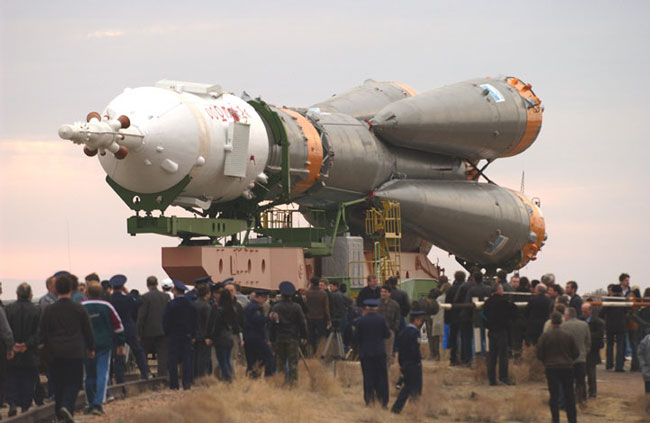

Soyuz 2 is the collective designation for the current generation versions of the Russian Soyuz rocket. In its basic form, it is a carrier rocket for placing payloads into low Earth orbit, however it is often flown with an upper stage, which allows it to lift payloads into higher orbits, such as Molniya and Geosynchronous orbits. The Soyuz FG is mainly used to launch the manned Soyuz TMA spacecraft to the International Space Station (ISS). On early test flights, Progress cargo spacecraft were launched to the space station as well.
The boosters and two core stages feature uprated engines with improved injection systems, compared to the Soyuz-U. The Starsem manufactured Fregat is the most commonly used upper stage, however the Ikar can also be used.
Soyuz 2 rockets are currently launched from LC-1 and LC-31 at the Baikonur Cosmodrome, and LC-43 at the Plesetsk Cosmodrome, launch facilities shared with earlier R-7 derived rockets, including the Soyuz-U and Molniya. A new launch site at the Centre Spatial Guyanais (Kourou) is currently being built.
Commercial Soyuz 2 flights are contracted by Starsem, and are currently launched from LC-31 at Baikonur. These will move to Kourou when the launch site is completed in 2008.
The designation Soyuz FG applies to Russian government launches, and the designation Soyuz ST applies to commercial (Starsem) launches. Otherwise, they are the same rocket. The Soyuz 2.1 is a more advanced version with upgraded digital flight control and telemetry systems. These improvements allow it to be launched from a fixed launch platform, and adjust its heading in flight, whereas the launch platforms for earlier R-7 derived rockets had to be rotated as the rocket could not perform a roll to change its heading in flight.
The Soyuz 2 has a higher performance rating, and higher payload capacity than the previous versions of the Soyuz. It is expected to eventually replace the Soyuz-U and Molniya-M rockets which are currently in service alongside it.
Launch history
 Lefthit
Lefthit
No comments:
Post a Comment